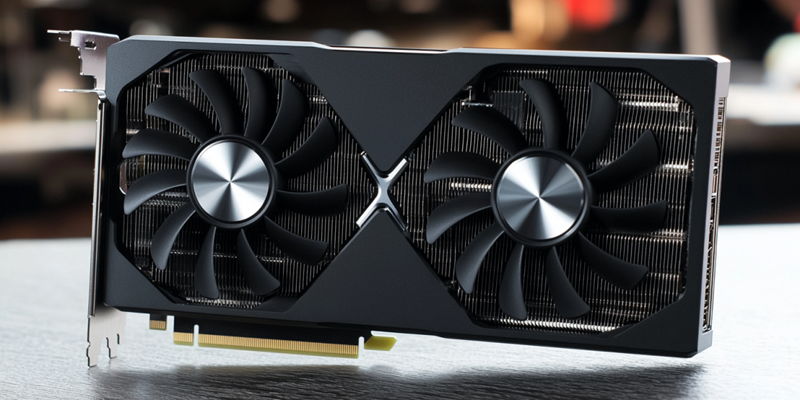ZOTAC has unveiled its new range of GeForce RTX 4070 GPUs equipped with GDDR6 memory, marking a notable shift towards more cost-effective alternatives in its graphics card lineup. The introduction of these GPUs is designed to cater to budget-conscious gamers and professionals who require high-performance graphics capabilities without the premium pricing associated with GDDR6X models. Available under the Twin Edge series, these new GPUs come in both standard and overclocked editions, with options for black or white color schemes. Although the GDDR6 memory slightly reduces memory speed (20Gbps compared to 21Gbps in GDDR6X), it results in only marginal performance differences, especially at 4K resolutions. More importantly, the RTX 4070 series remains highly competitive and performs exceptionally well at 1440p, which is the primary target resolution for these graphics cards.
Competitive Pricing and Market Availability
One of the most appealing aspects of the new ZOTAC GeForce RTX 4070 GPUs is their competitive pricing. For instance, the ZOTAC GeForce RTX 4070 12GB GDDR6 Twin Edge model is listed at $549.99 on Newegg, making it $10 cheaper than the GDDR6X version. Initially aimed at the Chinese market, these new cards have gradually become available in other regions, including North America and parts of Europe. Pricing in different regions varies, but early indications show that they are generally more affordable compared to their GDDR6X counterparts. Despite this, certain markets like Germany and Austria have reported higher prices for these models, hinting at regional pricing strategies that could affect consumer choice.
Adding value to the purchase, ZOTAC includes a free copy of “Star Wars Outlaws,” a game valued at $69.99, with each GPU. This incentive not only sweetens the deal but also offers consumers an immediate way to leverage their new hardware. Given the minimal performance difference between the GDDR6 and GDDR6X variants, the lower price point coupled with the added game makes the new GDDR6 models an attractive proposition for a wide range of users. Retailers are already reporting brisk sales, indicating strong consumer interest and acceptance.
Performance Considerations and Market Dynamics
While the new GDDR6 models offer excellent performance, the marginally slower memory speed does result in slightly lower benchmarks in 4K gaming when compared to GDDR6X models. However, at 1440p—the target resolution for the RTX 4070 series—these GPUs perform almost identically to their GDDR6X counterparts. This makes them a highly viable option for gamers focused primarily on 1440p gaming. Nonetheless, some users might still prefer the GDDR6X models for their higher memory speeds, provided the price difference remains negligible. The current surplus of GDDR6X cards further complicates consumer choices, as retailers offer competitive pricing to clear existing stock.
Looking ahead, market dynamics are likely to shift further in favor of GDDR6 models due to anticipated shortages of G6X memory, which could drive up the cost of GDDR6X models even further. This scarcity might prompt more consumers to opt for the GDDR6 variants, which offer nearly identical performance for a lower price. GPU manufacturers, including ZOTAC, are strategically addressing these market changes by offering more budget-friendly options without significantly compromising on performance and features. This approach not only meets consumer demand for affordable high-performing graphics cards but also helps manufacturers manage their supply chains more effectively.
Strategic Consumer Appeal
The new GDDR6 models deliver excellent performance, though their slightly lower memory speeds result in marginally lower benchmarks in 4K gaming compared to GDDR6X models. However, for 1440p gaming—the target resolution for the RTX 4070 series—these GPUs perform almost the same as their GDDR6X counterparts. This makes them an attractive option for gamers primarily interested in 1440p gaming. Some might still lean towards GDDR6X models for their faster memory speeds, especially if the price gap is small. The current surplus of GDDR6X cards adds another layer to consumer decisions, as retailers offer competitive prices to clear inventory.
Looking ahead, the market could shift more towards GDDR6 models due to expected G6X memory shortages, which might drive up GDDR6X prices. This potential scarcity could lead more consumers to choose GDDR6 variants, offering nearly identical performance at a lower cost. GPU makers like ZOTAC are adapting to these market changes by providing more budget-friendly options that don’t significantly compromise on performance. This strategy not only meets the demand for affordable, high-performing cards but also allows manufacturers to better manage their supply chains.

